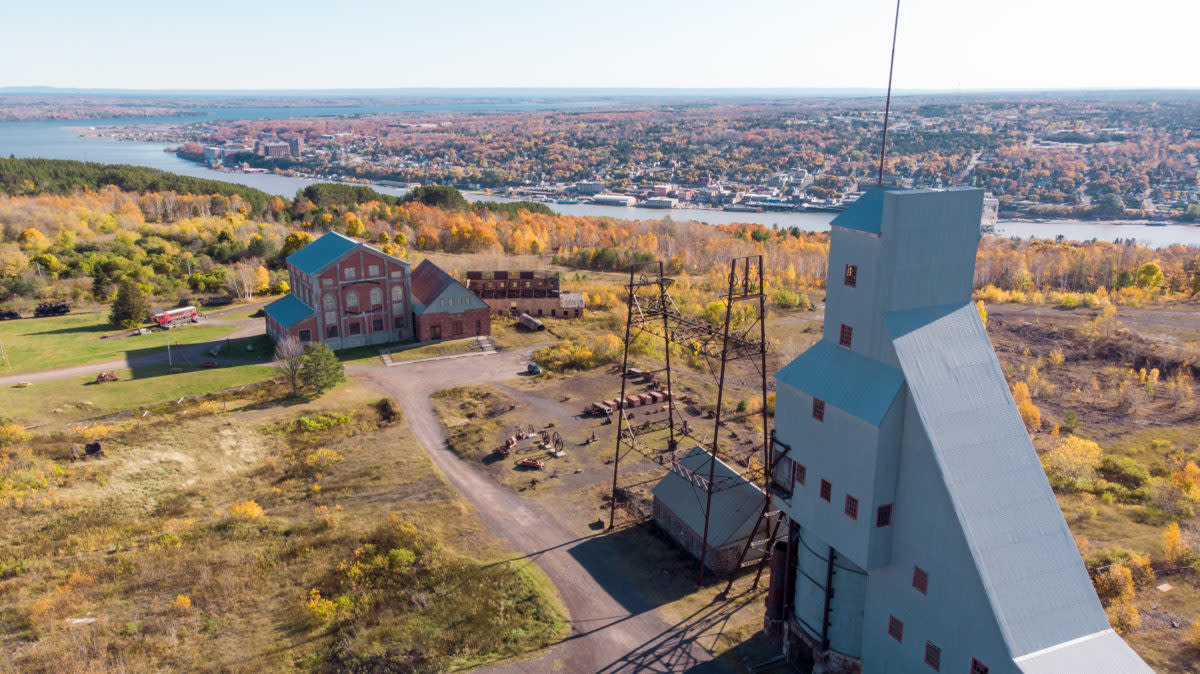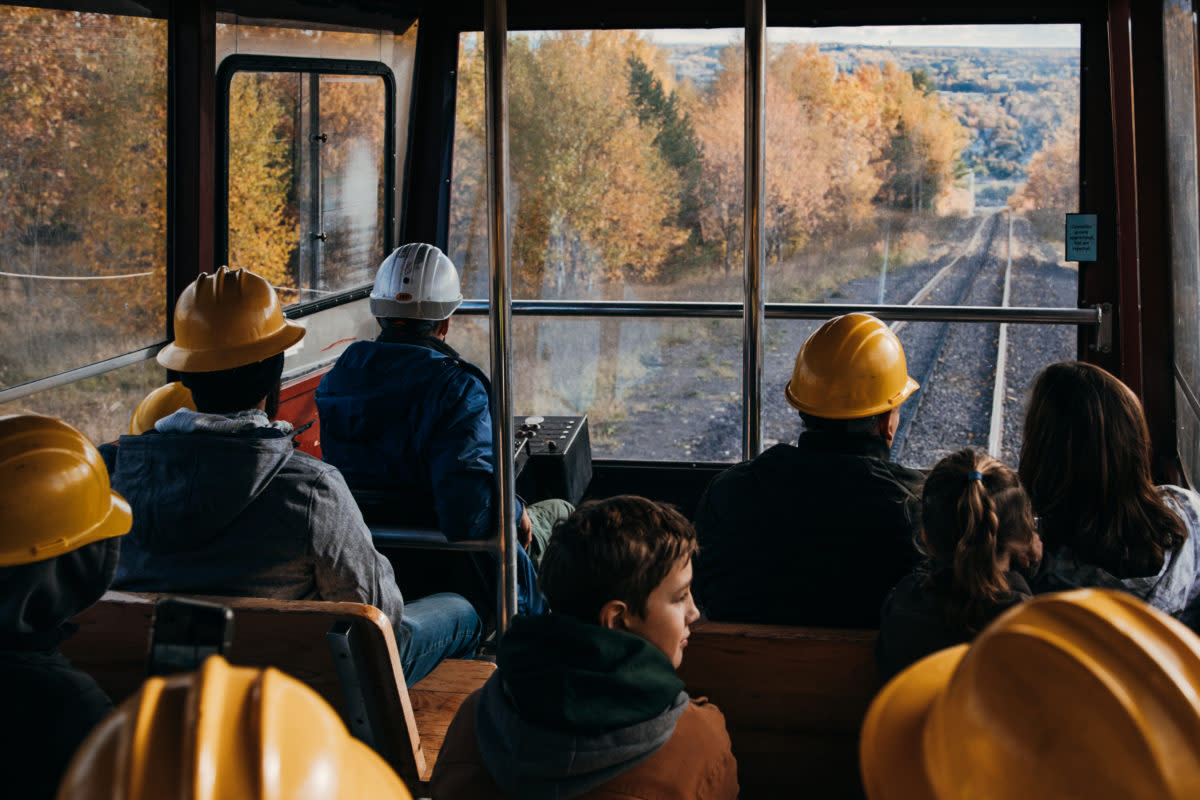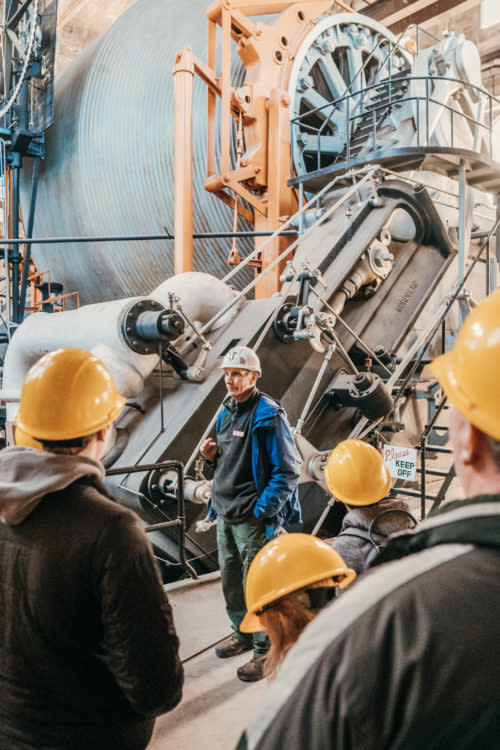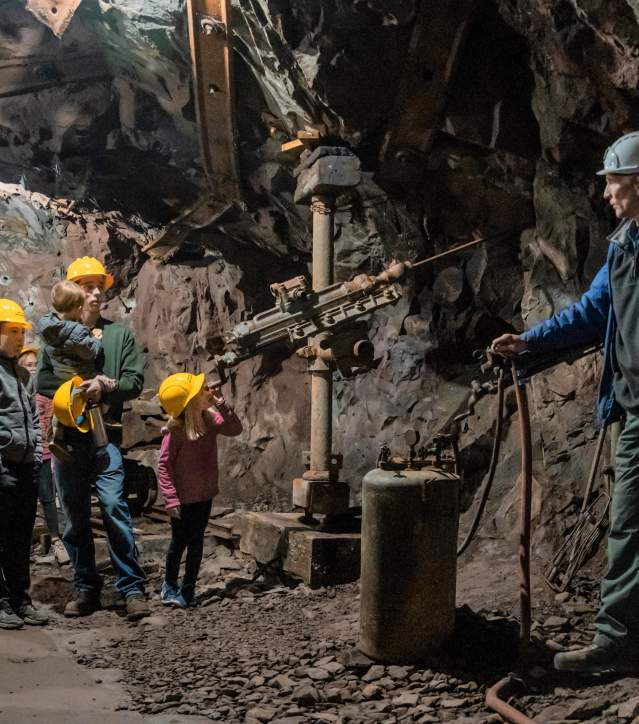Your browser is not supported for this experience.
We recommend using Chrome, Firefox, Edge, or Safari.
COPPER MINE TOURS
Our copper mines tell the stories of the brave men and women who traveled from around the world to seek wealth and prosperity during the copper booms of the late 1800s and early 1900s!
The first mineral boom in the United States occurred in 1843 when people from all over the continent began to chase the copper, silver and iron of Michigan’s Upper Peninsula. These mines were in commercial operation for more than a hundred years.
The first copper mine opened in 1771, and its owner, Alexander Henry, sent the massive Ontonagon Boulder–of pure native copper–to Detroit as evidence of the region’s richness. But speculative activity did not begin in earnest until 1841, hastened by the favorable reports of the first state geologist, Douglas Houghton. These reports, combined with publicity given the Ontonagon Boulder, sparked the first mineral rush in the nation, predating by several years the more famous California gold rush. Between 1843 and 1846, thousands of prospectors arrived from the East with the hope of “striking it rich.”
These events brought a rush of copper-seeking prospectors into the Upper Peninsula in the early 1840s. Copper mining has been almost continuous in the Keweenaw Peninsula area for the 150 years since then. During that time over 12 billion pounds of native copper have been mined.*
Today, visitors are still enthralled by the passion and perseverance of the men and women who toiled deep below the surface to extract copper ore. Their stories, both hardships and triumphs, can be experienced through tours of the mines that generated incredible wealth and industry.

KEWEENAW COPPER MINE TOURS
Check out these popular mine tours to experience a piece of the Keweenaw’s history: See how the mines operated, how technology changed over time, and the conditions laborers experienced during the mining process. And don’t forget to take a little bit of copper with you!
THE HISTORIC QUINCY MINE
America’s first mining boom began as prospectors and speculators rushed to mine deposits of native copper along the Keweenaw Peninsula. For 99 years Quincy mined these deposits and its impressive string of dividends earned it the name of “Old Reliable”. Today, the Quincy Mine Hoist Association offers tours of this National Historic Landmark.
Regularly scheduled tours are available throughout the summer. Tours are also available during the winter, but on a less frequent schedule or by appointment. Reservations are highly recommended during the summer, as tour slots fill up quickly. Make a tour reservation or learn more by visiting the Quincy Mine website. Tours at Quincy are a unique experience. A cogwheel tram will take you underground into the 43°F mine. While our native-born guides find that temperature refreshing, visitors may want to bring a windbreaker or light sweatshirt. Suitable shoes for walking are recommended for graveled/wet surfaces–sandals, flip-flops or other open-toe footwear are not advisable. All parts of the tour are fully accessible, but but be sure to make reservations in advance to ensure availability of guides.

QUINCY SMELTER
The Quincy Mining Company built the Quincy Smelting Works on the banks of the Portage Canal in 1898. Quincy constructed the smelter to refine and ship its own copper, as well as to accept custom work from neighboring mining operations. With the decline of the industry after World War II, however, the local sources of profitable copper diminished to the point that it no longer made sense to keep the facility open. Quincy closed the smelter in 1971. Seasonal Tours are also available of the Quincy Smelting Works, located on the waterfront of the Portage Canal! Find more information here or call 906-482-3101.
THE DELAWARE MINE
The Delaware Mine is an authentic mine that operated from 1847 until 1887, during the country’s first major mining boom. The mine was supported by a group of investors, including Horace Greeley. Although the mine didn’t make any money for its investors, it now serves as the perfect example of what the mines in this area were like in the 1800s. Visitors walk down 100 feet of stairs through the #1 shaft to the first level of the mine, then walk approximately 1700 feet through the original workings to experience a self-guided tour.
THE PAINESDALE MINE & SHAFT
Champion #4 Shaft House in Painesdale was built in 1902 as part of the Copper Range Mining Co. mines that ran from Atlantic Mine to Painesdale, MI. Champion #4 operated for nearly 65 years before closing in 1967. Tours can be arranged to view the inside of the shaft house, hoist house, and the Captain’s office. Champion #4 Shaft House offers free tours by appointment.

A group tour of the world’s largest steam hoist located at the Historic Quincy Mine
THE ADVENTURE MINE
A walk through the Adventure Mine provides the opportunity to experience copper mining as it truly was in the 1800s. View the world’s greatest copper district — actually traversing underground wearing a simple hardhat with a headlamp to light your way. Four distinct tours are offered: a 45-minute underground walk, a one-hour-and-20-minute underground hike, a three-hour underground tour that includes rappelling down an 80′ shaft, and a six-hour-long excursion to the second level of the mine with lunch underground included (advanced reservations required for the six-hour tour). .
MORE MINING HISTORY TO EXPLORE
Tens of thousands of immigrants from Finland, Cornwall and other European countries “went West” to Michigan’s northernmost peninsula to seek their…

